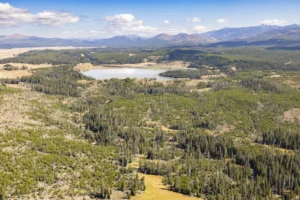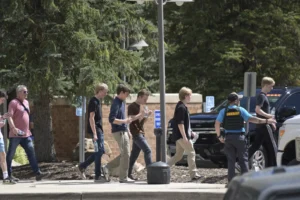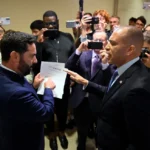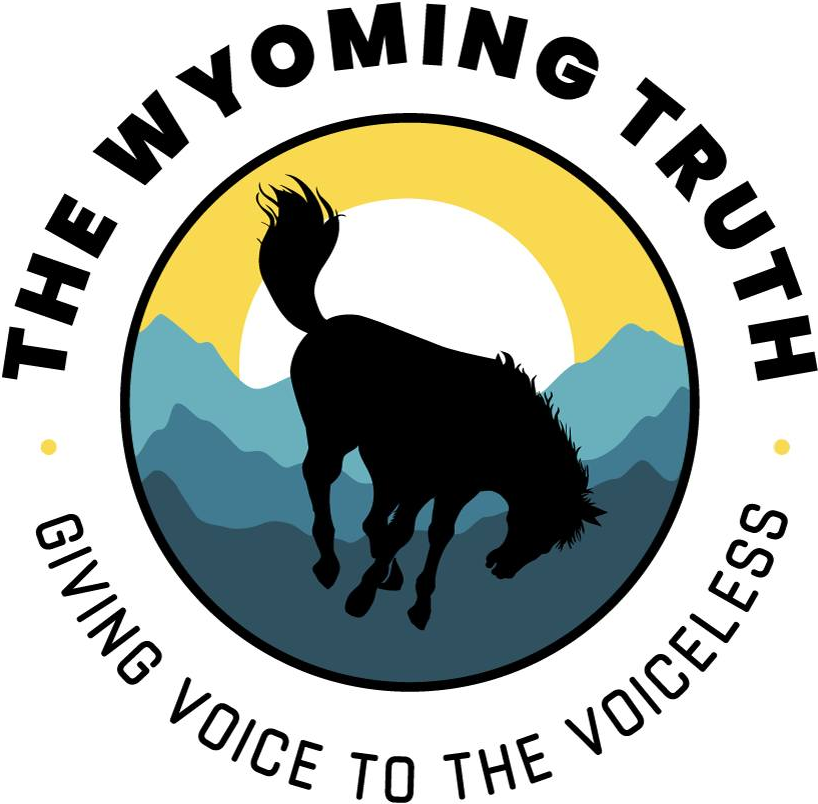Tribal College Wins Federal Grant to Create Online Language Curriculum
Regional Native American Languages Resource Center under development, will serve Wyoming among other states
- Published In: Other News & Features
- Last Updated: Oct 28, 2023

The Little Priest Tribal College in Nebraska received federal funding to establish a regional language resource center that will serve Wyoming and other western states. (Courtesy photo from Manoj Patil)
By Shen Wu Tan
Special to the Wyoming Truth
The Little Priest Tribal College is launching a language resource center to serve Western states, including Wyoming, with $349,945 in federal funding as part of a nationwide effort to preserve Native American languages and boost tribal education.
The college, which is based in Winnebago, Nebraska, will use that funding to provide online programs, resources, technical assistance and other services to “support the preservation, revitalization and promotion of Native American languages within tribal communities and educational systems,” a spokesperson for the U.S. Department of Education told the Wyoming Truth.
The college will develop virtual language education programming for the center to try to increase the number of Native American language learners. The center, which will be called the Midwest Native Language Resource Center, also will serve communities in Colorado, Kansas, Missouri, Nebraska, North Dakota and South Dakota.
“The Native American languages, the Indigenous languages, are in rapid decline as more and more seniors and elders pass, and they are taking their knowledge of language and culture with them,” Manoj Patil, president of the Little Priest Tribal College, told the Wyoming Truth. “And if we don’t intentionally protect and preserve and, to a certain degree, revitalize the languages, we are in a serious situation of losing the languages altogether to history.”
Programming will focus on the Ho-Chunk, Omaha, Dakota and Lakota languages. Patil said the federal funds will primarily be used to create content and e-learning platforms to provide access for anyone who wants to learn these languages.
He estimates it will take three to five years to establish the resource center; the first step is to hire a project director, followed by subject matter experts in different languages to develop the curriculum.
The full amount of the federal grant for the tribal college is $1,748,294 over five years, according to the U.S. Department of Education.
In total, the federal government awarded over $10 million this year to safeguard Native languages, support tribal educational agencies and increase Native teacher retention. The government has allocated nearly $2.3 million for the new Native American Language Resource Center programs, almost $6.2 million for the first-ever Native American Teacher Retention Initiative program and close to $1.7 million for the State Tribal Education Partnership program.
Federal funding also will go toward the National Native American Language Resource Center in Hawaii to offer services to regional centers, tribal organizations, higher education institutions and technical assistance providers.
“The Biden-Harris administration is focused on creating educational equity in school environments that support Native American students,” a spokesperson for the U.S. Department of Education said. “Secretary [Miguel] Cardona’s Raise the Bar: Lead the World Initiative includes a goal of promoting multilingualism, and the Department is committed to strengthening and revitalizing Native languages as part of that goal.”
One out of four Native American students in fourth or eighth grade had no exposure to a Native language, the agency noted, citing the 2019 National Indian Education Study.
D. Lynette St. Clair, an Eastern Shoshone Tribe member and Indigenous education consultant, stressed that increasing funding opportunities for tribes, schools and communities should be a priority at both state and federal levels.
“Finding avenues for funding has always been a challenge for tribally-operated programs, including education,” St. Clair told the Wyoming Truth. “It’s my hope that our tribal and educational leaders will pursue future funding opportunities to promote language learning at all levels, including teaching tribal students about their own history and sovereign rights and responsibilities.”
St. Clair noted that Native language instruction has been on the rise for both the Eastern Shoshone and Northern Arapaho Tribes in Wyoming. For instance, the Northern Arapaho language is taught at the University of Wyoming, Wyoming Indian Schools, Arapahoe Schools and St. Stephens Indian School. Both Fort Washakie School and Wyoming Indian Schools teach the Eastern Shoshone language. The Fort Washakie School also added language instruction for elementary, secondary and high school students.
Said St. Clair: “Our Native languages are tied to our very identity as Indigenous people…. We almost lost who we were. Through the collective resilience and strength of our people, we are here today speaking our language, singing our songs, practicing our spiritual beliefs and passing on that knowledge.”













